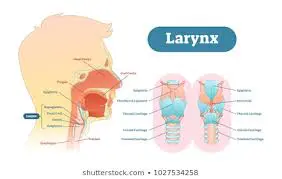How Does it Work….
The “spoken word” results from three components of voice production: voiced sound, resonance, and articulation.
- Voiced sound: The basic sound produced by vocal fold vibration is called “voiced sound.” This is frequently described as a “buzzy” sound. Voiced sound for singing differs significantly from voiced sound for speech.
- Resonance: Voice sound is amplified and modified by the vocal tract resonators (the throat, mouth cavity, and nasal passages). The resonators produce a person’s recognizable voice.
- Articulation: The vocal tract articulators (the tongue, soft palate, and lips) modify the voiced sound. The articulators produce recognizable words.
Voice Mechanism
Speaking and singing involve a voice mechanism that is composed of three subsystems. Each subsystem is composed of different parts of the body and has specific roles in voice production.
Three Voice Subsystems
| Subsystem | Voice Organs | Role in Sound Production |
|---|---|---|
| Air pressure system | Diaphragm, chest muscles, ribs, abdominal musclesLungs | Provides and regulates air pressure to cause vocal folds to vibrate |
| Vibratory system | Voice box (larynx)Vocal folds | Vocal folds vibrate, changing air pressure to sound waves producing “voiced sound,” frequently described as a “buzzy sound”Varies pitch of sound |
| Resonating system | Vocal tract: throat (pharynx), oral cavity, nasal passages | Changes the “buzzy sound” into a person’s recognizable voice |
Key Function of the Voice Box
The key function of the voice box is to open and close the glottis (the space between the two vocal folds).
- Role in breathing: Open glottis
- Role in cough reflex: Close, then open glottis
- Role in swallowing: Close glottis
- Role in voice: Close glottis and adjust vocal fold tension (plus additional functions for singing)
Key Components of the Voice Box
Cartilages
- Muscles
- Nerves
- Vocal folds

